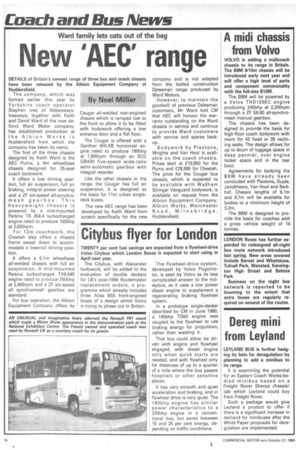Citybus flyer for London
Page 22

If you've noticed an error in this article please click here to report it so we can fix it.
TWENTY per cent fuel savings are expected from a flywheel-drive Volvo Citybus which London Buses is expected to start using in April next year.
The Citybus, with Alexander bodywork, will be added to the evaluation of double deckers for LB's post-1986 Routemaster replacement orders, a programme which already includes three Ailsa B55 front-engined buses of a design which Volvo is trying to phase out in Britain. The flywheel-drive system, developed by Volvo Flygomotor, is seen by Volvo as its less complicated answer to the trolleybus, as it uses a low power diesel engine to supplement a regenerating braking flywheel system.
In a prototype single-decker described by CM in June 1980, a 140bhp TD60 engine was coupled to the flywheel to use braking energy for propulsion, rather than wasting it.
That bus could either be driven with engine and flywheel engaged, with diesel engine only when quick starts are needed, and with flywheel only for distances of up to a quarter of a mile where the bus passes hospitals or other sensitive places.
It has very smooth and quiet acceleration and braking, and in flywheel drive is very quiet. The 140bhp engine has similar power characteristics to a 230bhp engine in a conventional bus, but saves between 15 and 25 per cent energy, depending on traffic conditions.


















































































































